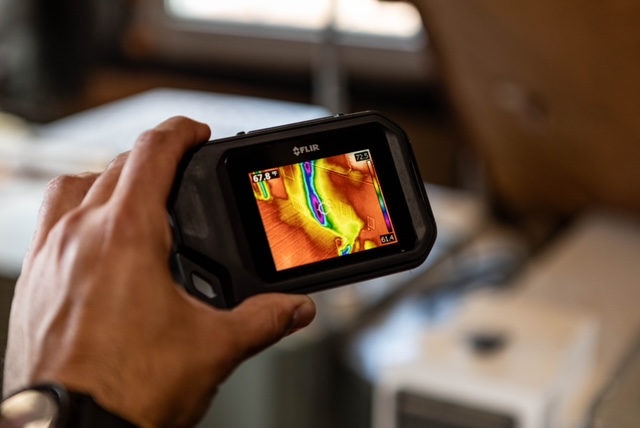Mold can be a silent and unwelcome guest in many homes, often hiding in places you’d least expect. Unfortunately, mold growth doesn’t always make itself known immediately, which can lead to health problems and structural issues if left untreated. Recognizing the signs that mold may be present is crucial, and a professional mold inspection can help identify and address these issues before they become serious. Here are five key signs that your home may need a mold inspection.
1. Persistent Musty Odors
If you notice a musty, damp smell in certain areas of your home, this could be a strong indicator of mold growth. While not all mold produces a smell, many types do, especially when they’re in hidden or hard-to-reach areas like behind walls or under floors. If ventilation or cleaning doesn’t eliminate the odor, it’s time to consider a professional mold inspection.
2. Visible Signs of Mold Growth
Sometimes mold growth is easy to spot, especially in areas prone to moisture, like bathrooms or basements. Look for discolored patches on walls, ceilings, or floors, which can range from black and green to brown or even white. Even if the patch appears small, it could be a sign of a larger problem behind the surface. Visible mold is an immediate reason to contact a professional for a thorough inspection.
3. Recent Water Damage or Flooding
Water damage creates the ideal environment for mold to thrive. If your home has experienced a recent leak, flood, or any form of water damage, mold growth may follow within 24-48 hours. Areas impacted by water, like drywall, insulation, or carpets, can retain moisture for long periods, leading to potential mold issues. A mold inspection after water damage can help catch any early signs of growth and prevent it from spreading.
4. Health Symptoms That Worsen Indoors
Mold exposure can cause a range of health symptoms, particularly affecting those with allergies, asthma, or compromised immune systems. Common symptoms include sneezing, coughing, eye irritation, and even headaches. If you notice that these symptoms worsen when you’re indoors and improve when you leave, it could be a sign of mold in your home environment. An inspection can help identify whether mold is the culprit and pinpoint the affected areas.
5. Condensation on Windows and Surfaces
High humidity levels and condensation can create ideal conditions for mold growth. If you frequently notice condensation on windows, pipes, or other surfaces, it may be a sign that humidity levels are too high in your home. This excess moisture can encourage mold growth, especially in poorly ventilated areas like bathrooms and basements. A mold inspection can assess humidity levels and check for any hidden mold in areas impacted by condensation.
The Benefits of a Professional Mold Inspection
Identifying mold early is key to preventing it from spreading throughout your home and posing health risks to your family. A professional mold inspection can not only confirm whether mold is present but also identify the source, type, and extent of the issue. Experienced inspectors use specialized equipment to detect mold in hidden areas, providing you with a detailed report and recommendations for remediation if needed.
If you’ve noticed any of these signs, it might be time to schedule a mold inspection to keep your home safe and healthy. Acting sooner rather than later can help protect both your property and your health.

